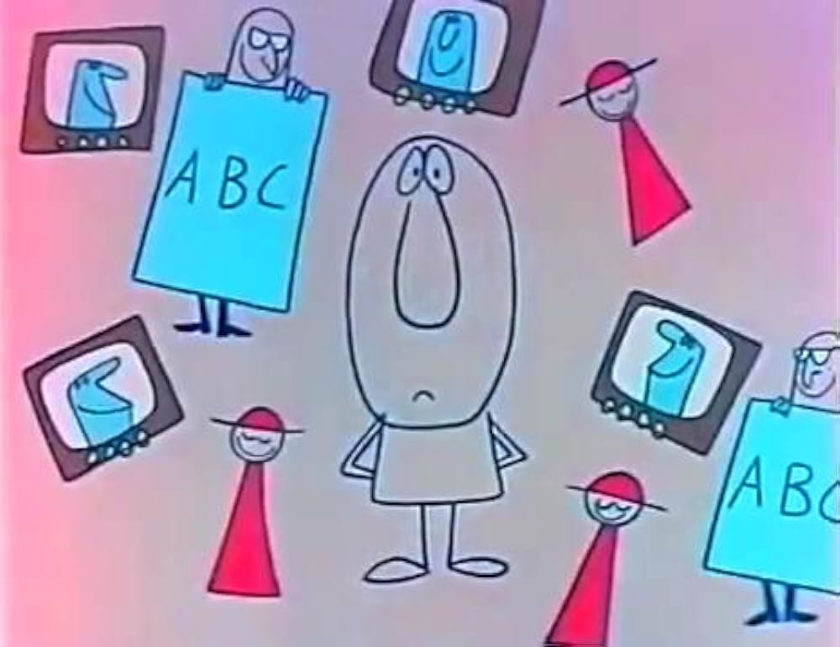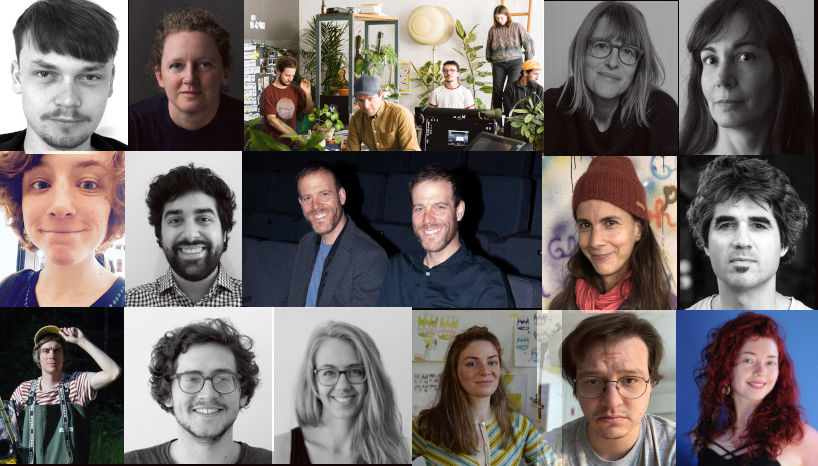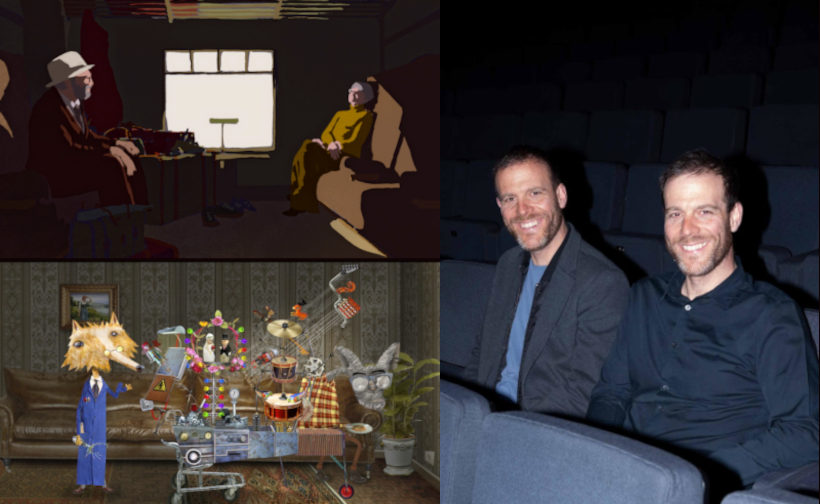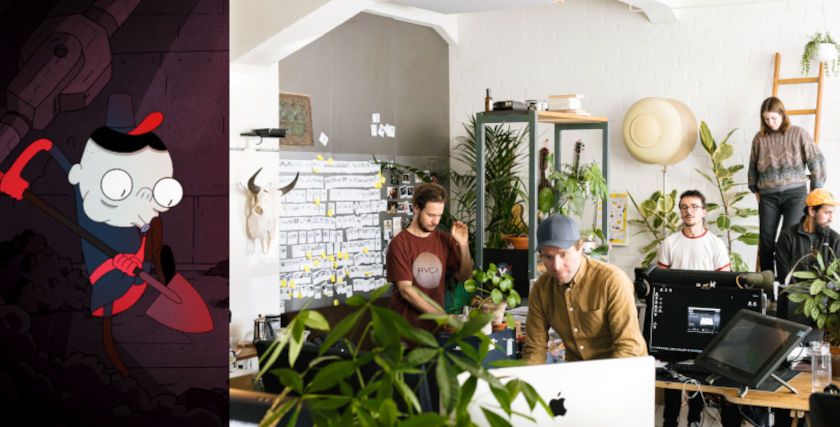'Animation Is the Best Medium to Reach a Large Audience': Interview with Simone Giampaolo (Swiss Animation Portraits 2022)
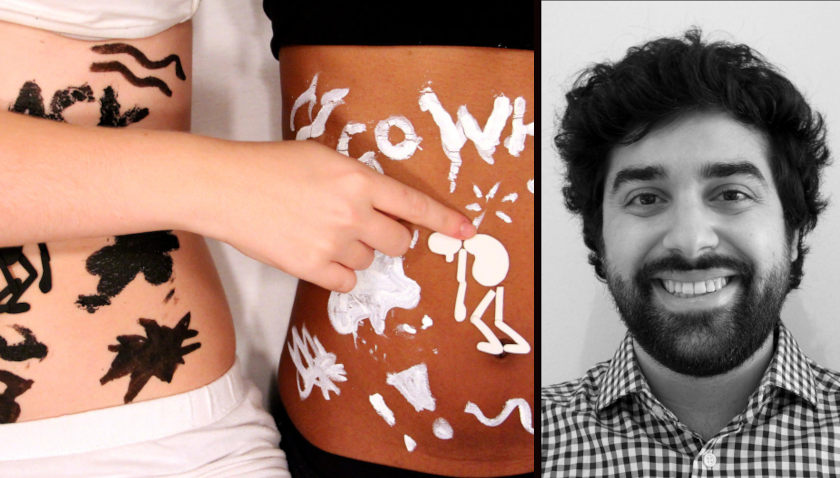
Simone Giampaolo is a London-based Swiss director and animator with a variety of projects under his belt. In his independent work, Giampaolo brings light to socially important topics that are crucial to discuss. ‘White + Black = RED’, a short film done in stop-motion, approaches the topic of racism in a lighthearted manner, while ‘Only a Child’, a large scale collaborative project led by Giampaolo, is a visualization of a speech given by Severn Cullis-Suzuki at the 1992 UN Summit that discusses the dangers of Global Warming. He has met and talked to Zippy Frames on his journey in the animation industry, about his creative process, and about the stories he hopes to soon visualize in his work.
ZF: What sparked your interest in animation? Are there any particular films that you can attribute this to, or perhaps something else?
SG: I grew up with cartoons from traditional Disney animation and anime from Japan; those were my two big loves. Then during my education in animation, when I decided to go to the UK to study animation, that’s the time when I really started investigating and exploring the work of traditional indie animators, which became inspirational in a way. Those that really influenced me in terms of style are two animators that have always used animation to spread an important message or a moral or teaching: the first is Bruno Bozzetto, who has been creating a lot of films that always have a moral or a social message handled with humor. The second one is Frédéric Back, the Canadian storyteller, and animator who directed 'The man who planted trees,’ which won an Academy Award some years back. He has always done short films, in a very delicate, poetic style, handling social and environmental issues.
ZF: Why did you choose to study and later work in the UK instead of Switzerland?
SG: There were two reasons for that. First of all, I was really bad at technology and computers, I could barely use Microsoft Paint. At the time, after a foundation year at Bournemouth University, I chose a course that really focused on technology and 3D software, which was my weakest point. From an artistic point of view, I was confident, I had ideas, and I could draw, but from a technical point of view, I was a disaster.
The second reason is I really wanted to get to a level of English that could support me in pitching my ideas. The only way was to choose a county where everyone speaks English. The US was too expensive, Australia was too far, and the United Kingdom at the time was not expensive as it is now.

Only A Child / Michaela Müller animating

Only A Child / Justine Klaiber animating
ZF: How do you find your inspiration? You mentioned that you enjoy animation with a message, so does your creative process start with a need to address a topic, or do you find it in other areas?
SG: I see it on two different levels. There is inspiration from the outer world, absorbing stuff from the outer world and that can be anything: it can be walking with your dog, talking to your friend, it can be watching a TV series that you like, and seeing something inspirational. The more you watch, the more you observe other people’s work and go to museums, and the more inspiration is brought to you. And then there is another level, which I call more of an aspiration, which is setting your own rules and your own limits. Sometimes inspiration and ideas come from limitations: so you limit yourself to a certain theme or a certain technique—it’s like receiving a brief from a client, but you did it yourself. So I find it quite useful sometimes to say, okay I want to talk about a certain topic, and I want to use this kind of technique. That already starts bringing new ideas to the table. This lets me mold and combine different strands and branches of an idea into something new.
ZF: Your independent work discusses important topics such as the issue of global warming and racism. Why do you find it important to approach these matters through animation?
SG: It’s because animation is the best medium for reaching a very large audience. That’s the reason why so many organizations and companies use animation to spread a message because it can really touch and move both adults and kids simultaneously. I think it’s the perfect medium— the ultimate art form to reach as many people as possible in a very accessible way. You can even talk about very harsh stuff, which live-action doesn’t manage to do so successfully because it gets very graphical and very visceral, and it may be difficult sometimes to handle certain topics. When done smartly, animation allows you to talk about every topic in an elegant way.
ZF: Could you describe your creative process, for both your independent work and your commercial work?
SG: I realized that I had to be a bit flexible throughout my career because every project requires to be tackled and approached in a different way. I don’t really follow a rule, but what I usually do is try to find out what I want the short to look like. The first step is always mood boards of inspirational work from modern or other artists. Finding the visual language, the animation technique, and the color palette of the short—is the very first step. Some people like writing the story first and then finding out the technique later, but for my short films, I need to have the technique in mind when I come up with the story. It’s difficult for me to come up with a story if I don’t know what look it has. Then I take pieces of paper and I do thumbnails.
That’s always my process. I directed a TV series for Sky Kids last year, and I basically thumbnailed the whole series myself before moving on to storyboards and animatics and blocking in 3D. So that’s become a bit of my process: just mood board, thumbnailing, and then if it’s necessary you can translate everything into the script.
ZF: You mostly do 3D animation. Is this a conscious choice, or is it affected by the market, and the fact that maybe most clients request 3D animation?
SG: Yeah, at that time, I’m talking 10-15 years ago, there was that boom of 3D animation as every studio moved to 3D, and it looked like there was not much work in stop motion or 2D anymore, so I got a bit influenced by that, I have to admit. That’s the reason why I chose Bournemouth University because I wanted to become good at a technical software, even though I love stop-motion—I think it’s the purest, most charming animation technique to ever existed, but I made that conscious decision of wanting to learn 3D to have a better chance to get employed. This is a bit different today: it seems more animation techniques are pushed by commissioners like Netflix, Amazon Prime, etcetera. It looks like there is a bit of a new age of embracing new techniques, which is really interesting, but at the time, everything felt 3D. Especially in the Uk, so that’s why I focused on that.
ZF: You’ve done a lot of work as a director and an animator. How did you switch from an animator position to the director one? Was it an easy switch or was it difficult to adjust?
SG: That came quite naturally because of my love for short stories. I started as a junior animator and generalist at Blue Zoo animation in London. They make a lot of TV series for kids and shorts. I never joined thinking I want to become a director, I always joined this studio and the industry thinking I would love to push my story ideas forward, I would like to suggest my own stories, and pitch my own ideas. That’s always been my driving force. Fortunately, this studio had a very inspiring program, where every year they allow the employees to pitch an idea for a short film, so I tried that a few times. In 2015, they welcomed my idea and they let me direct a Christmas short.
In the end, I directed three shorts at Blue Zoo before I left. The possibility to pitch your ideas and work with the team—that was the very first step, I think, from a junior animator to actually a filmmaker and storyteller, which is really what I wanted to do to start with. I joined the industry to tell stories. The possibility to be given the chance to pitch was great. That’s what really made a difference.
ZF: Do you do some writing, as well, independent from the animation?
SG: Usually they go hand in hand; these story ideas sort of bond to the visual style or the technique, but that has to change. That’s not sustainable; it works for very short ideas—1 minute, 3-minute shorts, that’s fine, but if you want to make an actual twenty, thirty-minute story that doesn’t work. I‘ve been writing more in the past few years. I’m not amazing at it—I used to be good at writing in Italian, but now I’ve started forgetting some Italian expressions, and I’m not perfect in English, so it’s always that struggle to make something work. I’m really happy when I can work with a scriptwriter, who takes my ideas and bullet points and makes it much nicer and much more elegant. I’ve got a good level for talking and presenting, but when it comes to writing, I can’t compete with some British writers, it’s really tough. But I’ve been doing that more. I’ve got a few ideas on the shelf, I don’t know when they are going to get made. It seems like it always takes so long for a short film—it might take three, or four years.
ZF: What kind of stories do you write on your own?
SG: I’ve developed these two sides of my personality: in my works, it shows a little. There is a branch of me that is the bonkers 3d animator. I think of very crazy, exaggerated, over-the-top performances of characters, so that is one of the things I enjoy writing. Coming up with ideas that are very difficult to make in 3D because they require a lot of squash and stretch and exaggeration. Then I developed this other side of me which is more I would say emotional. It’s not really about humor and crazy performances but more about the emotional journeys of a character.
I started writing that with a few topics in mind. One of them is refugees: I have a story in particular from a few years ago, which sees the journey of a refugee through an animated lens. And the other one is about reincarnation, so trying to focus on the theme of reincarnation and how that can create a very strong emotional bond between characters. I’m like double-faced, I have an emotional part and then a very crazy, slapstick side of me. The best thing would be to combine the two, but it takes finding the perfect story, that makes you laugh and makes you cry. It’s not an easy thing—everyone would love to create that kind of story. But, yeah, I’m still learning.
ZF: In ‘Only a Child’, a film you directed, over twenty animation directors come together to visualize a speech given at a UN summit. Do you foresee yourself collaborating with various animators in the independent animation community like this in the future?
SG: Yeah, I would love to. It would be nice to do something like that, but on a world scale: a director in Brazil, another one in Australia, one in India, another one in South Africa, it would be lovely, but I cannot do that in my spare time. If I do something like that, I need to dedicate my full time to it.
ZF: What do you see next for your projects?
SG: At the moment, I am in London, doing the preproduction of a series for a big platform. It’s a TV series for kids and families, very funky with a lot of humor involved, but I would love also to keep producing some indie stuff. I would love to push forward some independent ideas for short films, or TV specials, twenty-minute content, or something like that. Films that are more personal, have a more moral and ethical impact.
ZF: Do you have any ideas for the indie shorts that you’d like to share?
SG: I have this idea which has been floating around for some years now, for a story about refugees and migration, but it needs to go into more development. It’s been written and I’ve gathered some references and done some concept art, but it needs some more work. It’s a very important topic, it’s always been a very pressing matter because I come from a southern Italian family and my parents were immigrants. So I always felt like immigration has always been close to my personal life. Growing up in a country that is not entirely yours, it’s always been a big topic in my childhood and teenage years, and I would like to talk about that in a story at some point.

'Only a Child' by Simone Giampaolo will be screened during the Annecy Festival 2022, as part of the festival's Swiss Focus. Swiss Animation Portraits 2022 series is conducted in partnership with Swiss Films.
contributed by: Julia Lewicka




